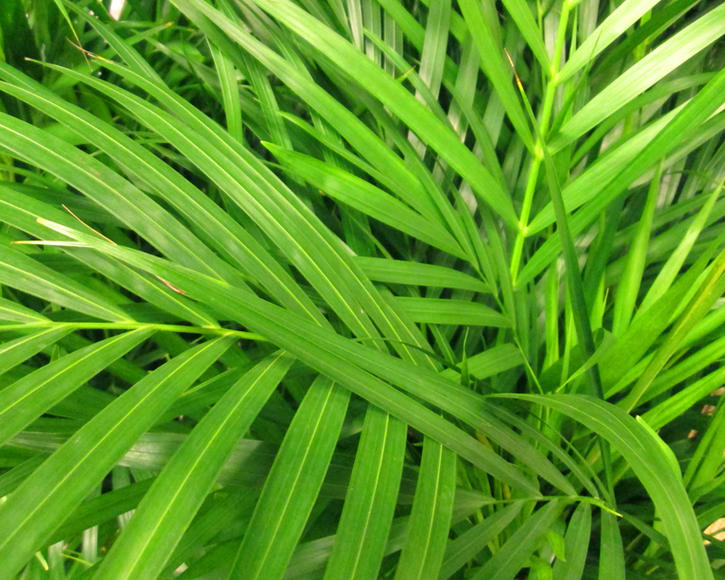Golden Cane Palm, Areca Palm
With its light, airy fronds, tropical Golden cane palm provides the home with a holiday atmosphere all year round. We explain how best to plant and care for Areca palm.
Factsheet
- Growth height (from)
- from 200 cm to 300 cm
- Growth characteristics
-
- upright
- overhanging
- loosely
- Flower color
-
- yellow
- Flower shape
-
- panicles
- Leaf color
-
- green
- page format
-
- feathered
- lancéolées
- duster
- Sheet properties
-
- evergreen
- Fruit color
-
- yellow
- Fruit shape
-
- Stone fruit
- Light
-
- scattered light to semi-shade
- Soil type
-
- sandy to loamy
- Soil Moisture
-
- fresh to humid
- ph value
-
- neutral to weakly acidic
- Lime compatibility
-
- lime-tolerant
- Nutrient requirements
-
- nutrient-rich
- Humus
-
- rich in humus
- Decorative or utility value
-
- Leaf ornaments
- Winter Hardness
-
- frost-sensitive
- Use
-
- Interior greening
- Planters
- Winter garden
- Garden style
-
- Pot garden
Golden cane palm (Dypsis lutescens, formerly Chrysalidocarpus lutescens) belongs to the palm family (Arecaceae). The species used to belong to the genus Areca, which also includes the Betel tree (Areca catechu). Golden cane palm is now a member of the genus Dypsis, but still tends to be sold as areca palm. The Golden cane palm is native to Madagascar. As a houseplant, it provides some holiday flair and has always been extremely popular. Thanks to its air purifying properties, the areca palm also improves indoor air quality – making it a popular office plant.
The slender, tubular stems of the Golden cane palm stand close together in dense clusters. The rachis of the leaves are covered with tiny yellow-black dots. The evergreen Areca palm has an upright growth habit and ends in a loose umbrella-like tuft with arching fronds. While the Golden cane palm grows to heights of up to 33 feet in its natural habitat, it is rarely taller than ten foot indoors – especially as it grows rather slowly in the first few years.
The Golden cane palm has fresh green, comb-like pinnate fronds that gently arch upwards. Their overall structure appears very light and airy. The leaves are linear to sword-shaped. The fronds of fully-grown plants can consist of up to 120 leaflets.
The Golden cane palm hardly ever flowers when grown indoors. The Areca palm is therefore usually only sold in stores as a green plant.
The Golden cane palm takes its name from its gold-colored leathery and fibrous stone fruit. This is also true of its former botanical name which consists of the Greek words "chrysos" meaning gold and "karpos" meaning fruit.

Although the Areca palm needs plenty of light, it should not be exposed to direct sunlight, otherwise its leaves will quickly turn yellow. Dypsis lutescens is better suited to a bright to partially shaded spot indoors or in a conservatory. A high humidity and year-round temperatures of around 68 degrees Fahrenheit are ideal. Young plants should not be cooler than 64.4 degrees Fahrenheit during the winter rest period. They can later endure temperatures of 59 degrees Fahrenheit, but leaving them in cooler conditions like this is not recommended. Moreover, temperatures should never fluctuate dramatically, and the palms do not tolerate drafts well.
The Golden cane palm can be kept in conventional fresh potting soil that is rich in nutrients and humus. However, hydroponics is being used more and more in recent years.
It’s important to find the right balance when it comes to watering the Golden cane palm. Its substrate should always be moist and never dry out. At the same time, waterlogging should be avoided at all costs. The Areca palm needs a little less water during the cooler conditions in winter. As it is particularly important for young plants to have a constant supply of water, we recommend putting them in a saucer filled with water so that the plants can easily get the moisture they need on their own.

Fertilize your Areca palm once a week between spring and fall with a little liquid flower fertilizer. Once every three weeks is sufficient during winter.
The best time to repot Dypsis lutescens is in spring or summer. Young golden cane palms should be repotted each year, older and larger plants only need to repotted once their roots have filled the entire pot. This is generally the case every two to three years. This requires a little bit of intuition, since the roots of the Areca palm react very sensitively to damage.
The Golden cane palm does not require any pruning to maintain its beautiful growth. However, yellow and withered leaves can be cut off close to the base.
Areca palms need high humidity. You should therefore spray them regularly in winter, particularly in rooms with dry, heated air.
There are no varieties of Dypsis lutescens available in this country.
Older golden cane palms often form shoots/root sprouts, which can be used for propagation by simply detaching them and putting them in their own pot. Areca palm can be propagated from seed all year round, however it needs a soil temperature of 77 degrees Fahrenheit to germinate.
The areca palm can be affected by spider mites, scales and mealybugs especially in winter and if the air indoors is too dry. Note: the plant reacts very sensitively to standard pesticides. It should therefore simply be rinsed off in the event of a pest infestation. Spraying the Golden cane palm helps to prevent infestations. It is also occasionally susceptible to red spider mites.

